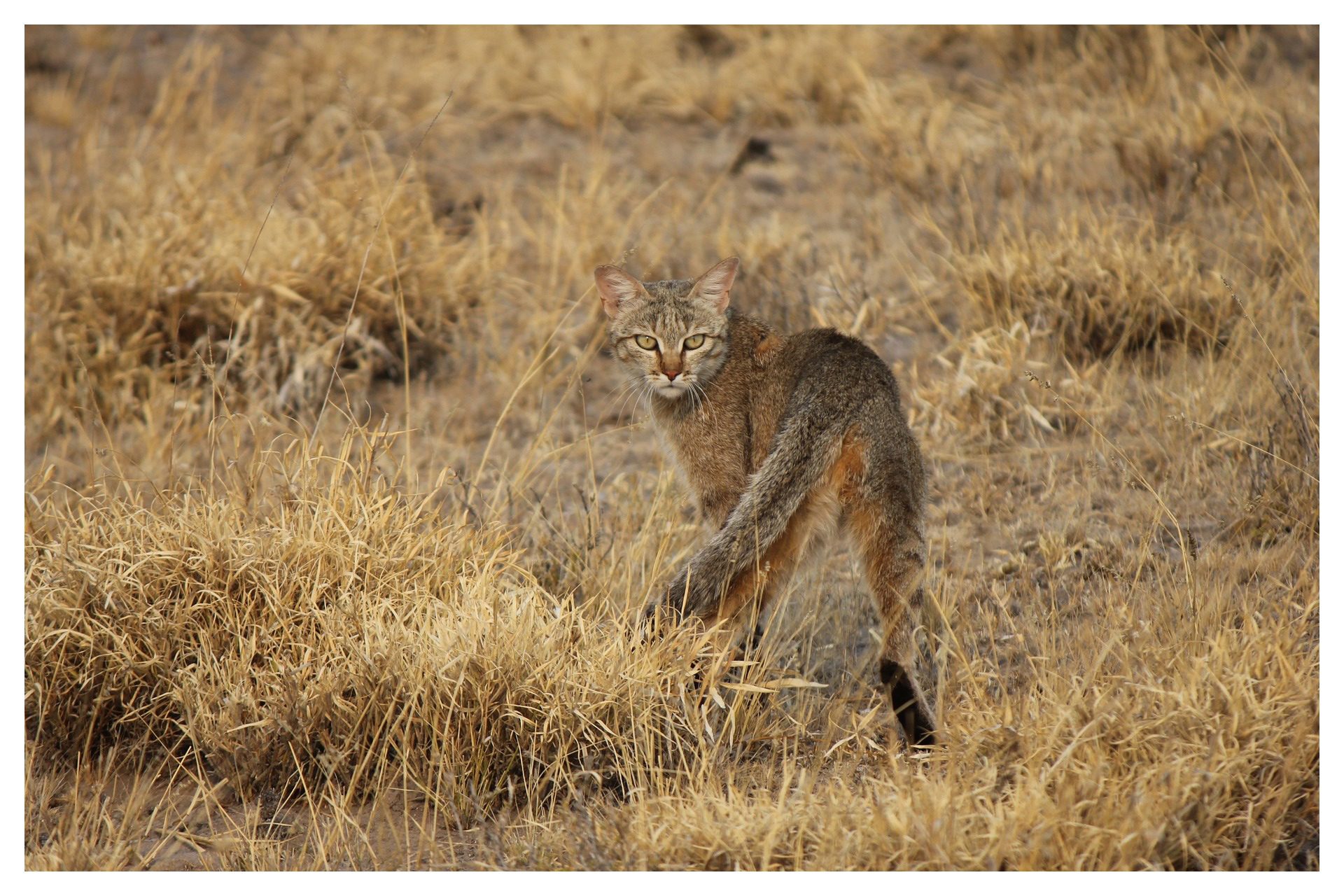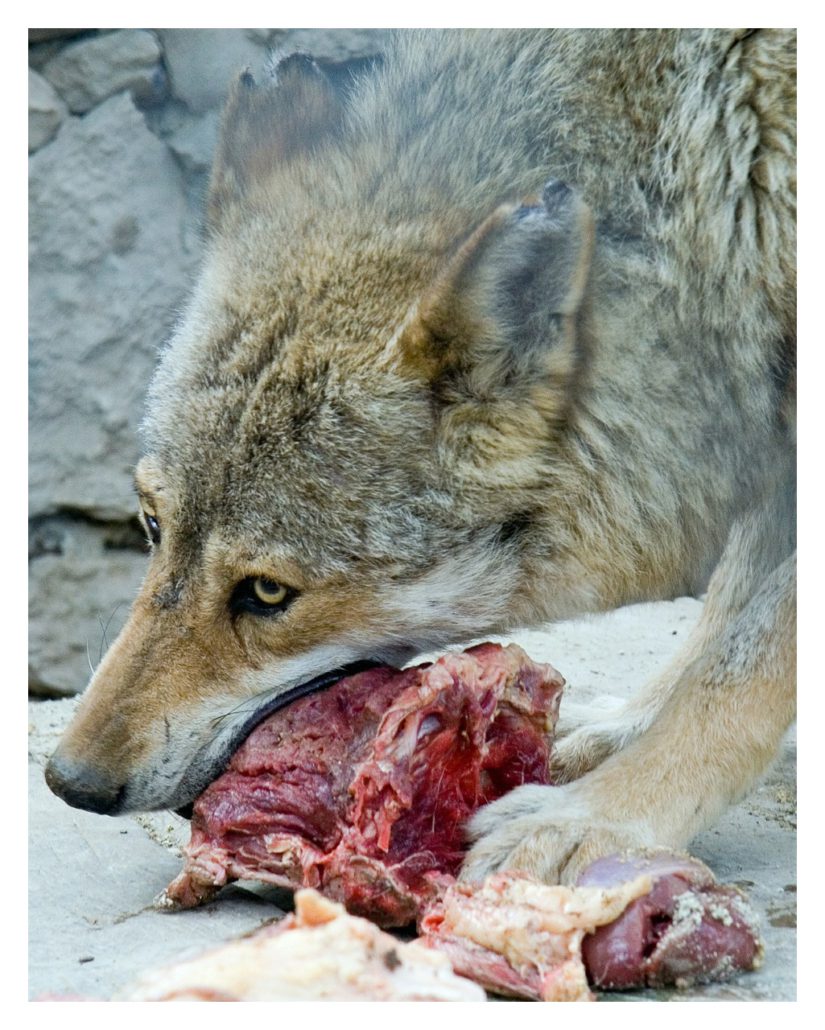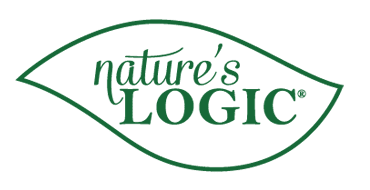Understanding the Importance of Moisture in Pet Foods
By: Tom Cameron, DVM
By: Tom Cameron, DVM
We are talking today about the importance of moisture in our pet’s foods. While this subject applies to both dogs and cats, moisture can have an even more pronounced effect on cats, so cats may get a bit more attention in this presentation. But moisture is critically important to both dogs and cats.
Dogs and cats are both carnivores. In the wild, dogs are “scavenging carnivores,” eating animals they catch, dead animals, and other foods. Cats in the wild evolved as “strict carnivores.” They got most of their nutrition from catching live prey. Carnivores also get lots of water from their foods – 60-75% of fresh foods is water.
Some individual African wildcats were first domesticated about 10,000 years ago in the Near East, and are the ancestors of the domestic cat.

Most cats evolved in desert climates, where water was scarce. Cats don’t naturally drink a lot of water, even when dehydrated. As strict carnivores, they always got most of their water from their food – they are genetically programmed this way. I’ll repeat: foods carnivores eat are 60-75% water.
About 100 years ago, dry, kibble pet foods were created. Kibble is a mixture of meat, grains and other ingredients, heated and formed into dry, crunchy pieces. Dry foods are currently the most popular way to feed dogs and cats – in 2015, pet owners spent $3.8 billion dollars on dry pet foods! Dry foods are 5-10% moisture. Did you get that? 5-10% moisture. This is less than 1/10th the moisture content of fresh meat – a huge change in how cats and dogs used to eat. How would your car function on 1/10th the fluids it was meant to have? Imagine eating regular meals of beef jerky and granola.
Is kibble alone the best food for cats and dogs? NO. Could feeding only dry food be causing health problems? YES!!
Here are some problems with feeding only dry foods:
Remember that a carnivorous diet is a high-moisture diet, 60-75% water. Cats and dogs are genetically built to do best on high-moisture foods, like canned and raw meats, vegetables and fruits. These foods are easier to digest, and increase the amounts of water taken in every day. As high-moisture foods, they match cat and dog’s natural need for high quality protein and fat, low carbohydrate levels, and most importantly, plenty of water.
A wolf takes a bite of its prey.

Do your best to feed a variety of high-moisture, low-carbohydrate foods. Here are some suggestions:
Moisten the food before feeding, using warm bone broth or water. Allow the food to sit for several minutes before feeding.
The more high-moisture foods (canned, fresh frozen, freeze-dried) in the diet, the better.
Rotate proteins every 1-2 months, to ensure variety.
Keep plenty of fresh drinking water available at all times.
Be sure you and your pets get plenty of regular exercise.
References:
2024 N Frontage Road
Mount Pleasant, TX 75455
888-546-0636
M-F 8am-5pm CST
info@natureslogic.com






This site uses cookies. By continuing to browse the site, you are agreeing to our use of cookies.
OKWe may request cookies to be set on your device. We use cookies to let us know when you visit our websites, how you interact with us, to enrich your user experience, and to customize your relationship with our website.
Click on the different category headings to find out more. You can also change some of your preferences. Note that blocking some types of cookies may impact your experience on our websites and the services we are able to offer.
These cookies are strictly necessary to provide you with services available through our website and to use some of its features.
Because these cookies are strictly necessary to deliver the website, refusing them will have impact how our site functions. You always can block or delete cookies by changing your browser settings and force blocking all cookies on this website. But this will always prompt you to accept/refuse cookies when revisiting our site.
We fully respect if you want to refuse cookies but to avoid asking you again and again kindly allow us to store a cookie for that. You are free to opt out any time or opt in for other cookies to get a better experience. If you refuse cookies we will remove all set cookies in our domain.
We provide you with a list of stored cookies on your computer in our domain so you can check what we stored. Due to security reasons we are not able to show or modify cookies from other domains. You can check these in your browser security settings.
These cookies collect information that is used either in aggregate form to help us understand how our website is being used or how effective our marketing campaigns are, or to help us customize our website and application for you in order to enhance your experience.
If you do not want that we track your visit to our site you can disable tracking in your browser here:
We also use different external services like Google Webfonts, Google Maps, and external Video providers. Since these providers may collect personal data like your IP address we allow you to block them here. Please be aware that this might heavily reduce the functionality and appearance of our site. Changes will take effect once you reload the page.
Google Webfont Settings:
Google Map Settings:
Google reCaptcha Settings:
Vimeo and Youtube video embeds:
The following cookies are also needed - You can choose if you want to allow them:
